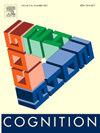基于言语概率的决策与交际行为之间的心理联系
IF 2.8
1区 心理学
Q1 PSYCHOLOGY, EXPERIMENTAL
引用次数: 0
摘要
言语概率根据方向性分为两种类型:积极的(暗示目标结果的发生,例如,“很可能”)和消极的(暗示不发生,例如,“很不确定”)。先前的研究表明,人们的决定受到方向性差异的影响,他们根据交际情境使用积极或消极的表达。在本研究中,我们试图在言语概率的基础上阐明决策与交际行为之间的关系。在抽样决策模型和参考点假设的基础上,提出了信念抽样决策的定量模型,并考察了该模型是否可以解释决策和交际行为。该模型揭示了决策与交际行为之间表面无关现象背后的心理机制。特别是,言语概率的听者(决策者)推断出说话者(信息传递者)持有的信念,并根据这些信念做出决策。这些推断的信念与说话者在传递概率信息时的信念一致。因此,该模型阐明了受方向性影响的决策与交际行为(说话人对方向性的选择)之间的心理联系。本文章由计算机程序翻译,如有差异,请以英文原文为准。
The psychological link between decisions and communicative behavior based on verbal probabilities
Verbal probability is categorized into two types in terms of directionality: positive (suggesting the occurrence of a target outcome: e.g., “it is likely”) or negative (suggesting the nonoccurrence: e.g., “it is quite uncertain”). Previous studies have shown that people's decisions are affected by differences in directionality, and that they use either positive or negative expressions depending on the communicative situation. In this study, we attempt to clarify the relationship between decisions and communicative behavior based on verbal probabilities. We proposed a quantitative model called Decision by Belief Sampling based on the Decision by Sampling model and the reference point hypothesis, and examined whether decisions and communicative behaviors could be explained with this model. The proposed model reveals the psychological mechanisms underlying superficially unrelated phenomena between decisions and communicative behaviors. In particular, listeners of verbal probabilities (decision-makers) infer the beliefs held by a speaker (conveyer of information) and make decisions based on these beliefs. These inferred beliefs align with the speaker's beliefs when communicating probabilistic information. Thus, the proposed model clarifies the psychological link between decisions affected by directionality and communicative behaviors (speaker's choice of directionality).
求助全文
通过发布文献求助,成功后即可免费获取论文全文。
去求助
来源期刊

Cognition
PSYCHOLOGY, EXPERIMENTAL-
CiteScore
6.40
自引率
5.90%
发文量
283
期刊介绍:
Cognition is an international journal that publishes theoretical and experimental papers on the study of the mind. It covers a wide variety of subjects concerning all the different aspects of cognition, ranging from biological and experimental studies to formal analysis. Contributions from the fields of psychology, neuroscience, linguistics, computer science, mathematics, ethology and philosophy are welcome in this journal provided that they have some bearing on the functioning of the mind. In addition, the journal serves as a forum for discussion of social and political aspects of cognitive science.
 求助内容:
求助内容: 应助结果提醒方式:
应助结果提醒方式:


